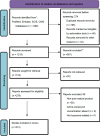Potential of phytochemicals in the treatment of Alzheimer disease by modulating lysosomal dysfunction: a systematic review
- PMID: 40890872
- PMCID: PMC12400566
- DOI: 10.1186/s13020-025-01204-z
Potential of phytochemicals in the treatment of Alzheimer disease by modulating lysosomal dysfunction: a systematic review
Abstract
Alzheimer disease (AD) is a primary international health dilemma, especially in elderly populations, due to its progressive nature and its adverse cognitive impact. The dysfunction of lysosomes, which impairs protein degradation and leads to toxic accumulation in neurons, is a pivotal factor in AD. We explore phytochemicals that specifically target lysosomal dysfunction via the activation of autophagy, phagocytosis, and lysosome function, exhibiting anti-inflammatory and antioxidant properties. This study involves extracting and evaluating phytochemicals by exploring multiple databases, Google Scholar, PubMed, the Science Citation Index Expanded (SCIE), and the China National Knowledge Infrastructure (CNKI), integrating contemporary biochemical evidence with TCM principles-highlighting the interconnected roles of deficiency, stasis, and phlegm-to provide a comprehensive therapeutic framework. Key phytochemicals-magnolol, trehalose, and salidroside- demonstrate notable promise in enhancing lysosomal function, reducing amyloid beta accumulation, and improving cognitive outcomes. Addressing traditional theory and modern science, we underline the potential for future research by clarifying the mechanisms of compounds and their effectiveness, which may delay the disease process.
Keywords: Alzheimer disease; Autophagy; Lysosomes; Phagocytosis; Phytochemicals.
© 2025. The Author(s).
Conflict of interest statement
Declarations. Ethics approval and consent to participate: Not applicable. Consent for publication: Not applicable. Competing interests: The authors declare that they have no competing interests.
Figures




Similar articles
-
Prescription of Controlled Substances: Benefits and Risks.2025 Jul 6. In: StatPearls [Internet]. Treasure Island (FL): StatPearls Publishing; 2025 Jan–. 2025 Jul 6. In: StatPearls [Internet]. Treasure Island (FL): StatPearls Publishing; 2025 Jan–. PMID: 30726003 Free Books & Documents.
-
Phytochemical regulation of CaMKII in Alzheimer's disease: A review of molecular mechanisms and therapeutic potential.Pharmacol Res. 2025 Jun;216:107790. doi: 10.1016/j.phrs.2025.107790. Epub 2025 May 21. Pharmacol Res. 2025. PMID: 40409522
-
18F PET with florbetapir for the early diagnosis of Alzheimer's disease dementia and other dementias in people with mild cognitive impairment (MCI).Cochrane Database Syst Rev. 2017 Nov 22;11(11):CD012216. doi: 10.1002/14651858.CD012216.pub2. Cochrane Database Syst Rev. 2017. PMID: 29164603 Free PMC article.
-
Phytochemicals in Cancer Therapy: A Structured Review of Mechanisms, Challenges, and Progress in Personalized Treatment.Chem Biodivers. 2025 Aug;22(8):e202402479. doi: 10.1002/cbdv.202402479. Epub 2025 Jun 11. Chem Biodivers. 2025. PMID: 40192260 Free PMC article. Review.
-
18F PET with flutemetamol for the early diagnosis of Alzheimer's disease dementia and other dementias in people with mild cognitive impairment (MCI).Cochrane Database Syst Rev. 2017 Nov 22;11(11):CD012884. doi: 10.1002/14651858.CD012884. Cochrane Database Syst Rev. 2017. PMID: 29164602 Free PMC article.
References
Publication types
Grants and funding
LinkOut - more resources
Full Text Sources

